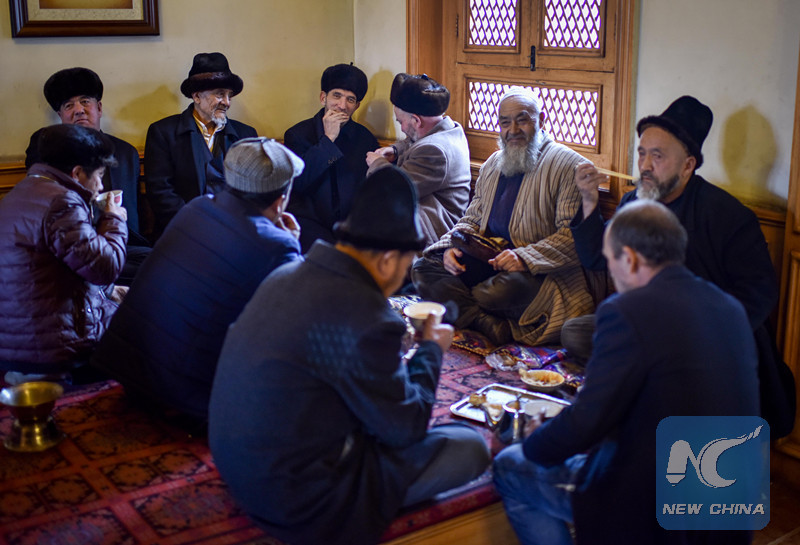
Locals enjoy tea in Ostang Boi Teahouse in Kashgar, northwest China's Xinjiang Uygur Autonomous Region.
URUMQI, Feb. 25 (Xinhua) -- Every morning at 9:30, 50-year-old teahouse owner Mamet Osman opens the door of Ostang Boi, and welcomes the day's first customers, most of whom are old folks, just like his ancestors did a century ago.
Located in Kashgar City, northwest China's Xinjiang Uygur Autonomous Region, Ostang Boi is known for brewing various kinds of tea not only from across the country but also from worldwide, including fruit tea from Germany and Iran, and Turkish black tea.

A customer sits on the balcony of Ostand Boi, waiting for his tea.
People in Kashgar has been drinking tea since more than a thousand years ago, thanks to the city's important position on the ancient Silk Road, through which merchants traded tea and other goods between China, Middle East and Europe.
Osman took over the teahouse from his grandfather, and is running the shop with his child. Every day, he sits in front of the door, and greets every frequent customer.

Osman serves in the teahouse. New kinds of tea have been added on the menu in recent years, including milk tea, Germany fruit tea and Sri Lankan black tea. But Chinese Fu tea remains the most popular.
Here, people bunch on the bed-stove for warmth, chatting over a cup of fine tea and snacks. Time slips away unknowingly.
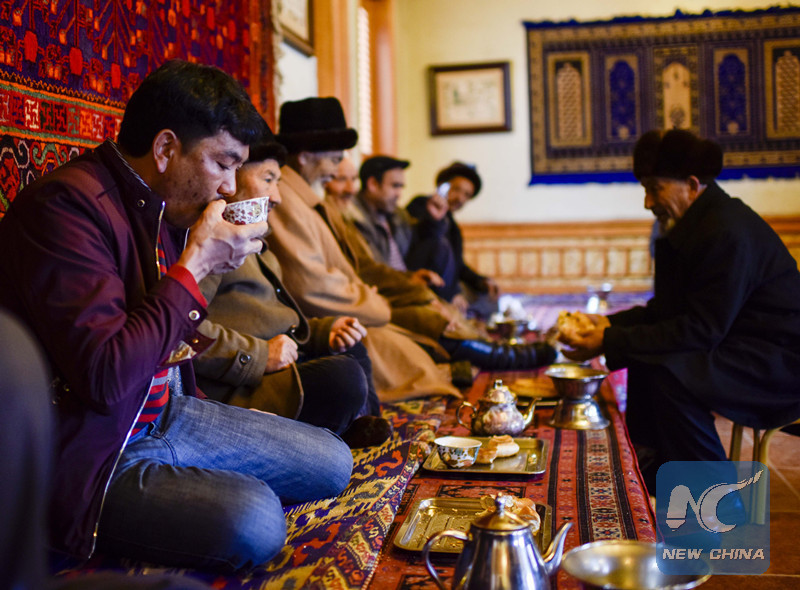
Customers enjoy their tea on the bed-stove.

An old man enjoys tea over Naan, a kind of local crusty bread. A piece of Naan, which costs only two yuan, and a pot of tea make a common lunch in Kashgar.
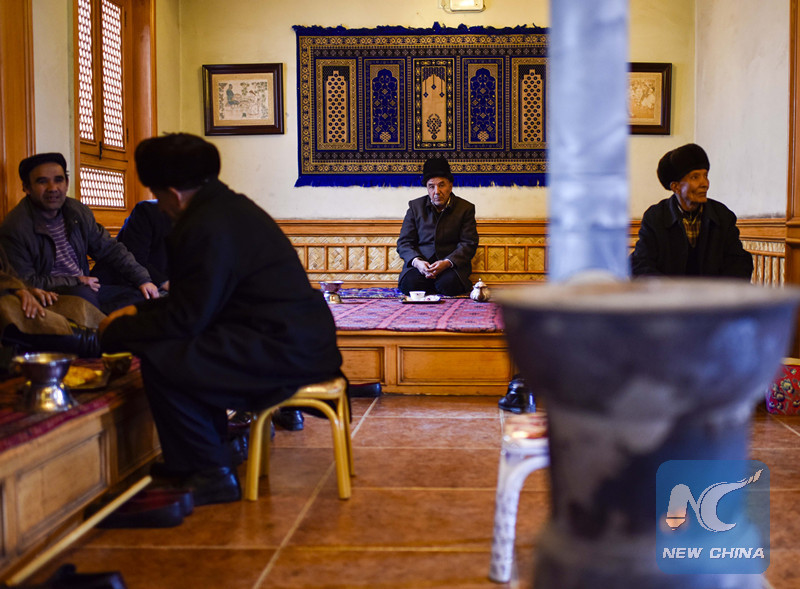
The stove keeps burning for the whole day. The temperature is below zero degree Celsius outside the teahouse but is 20 degrees inside.
Osman is the busiest on Friday because not far from the teahouse is China's largest mosque, Id Kah Mosque, and many people would come to Ostang Boi for a cup of tea after prayer on the day of Jumu'ah, or Friday.
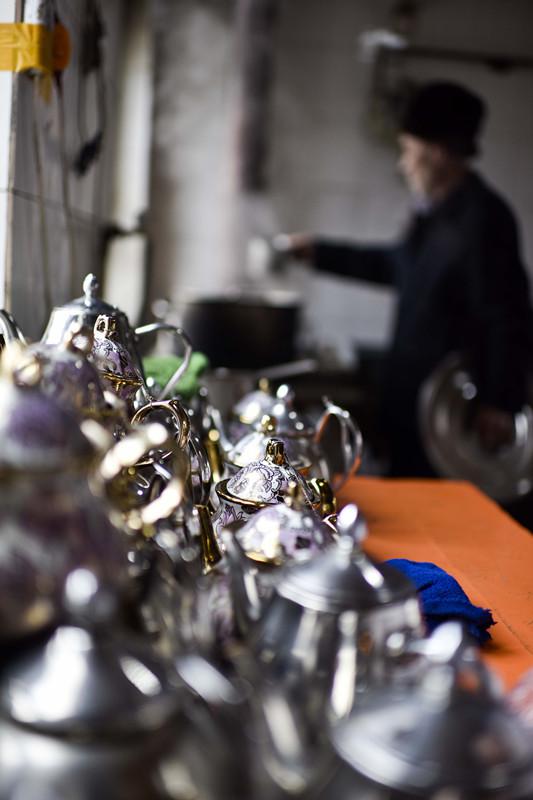
In the kitchen: Different kinds of tea pots are used for different kinds of tea.
Fu tea sells best in Ostang Boi. It's ten yuan (1.46 U.S. dollars) a pot. Osman sells about 250 pots a day.
Fu tea, a kind of brick tea produced in central China's Hunan Province and northwest China's Shaanxi Province, helps digest and thus is favored by locals in northwest China whose meals contain a lot of oil and fat.
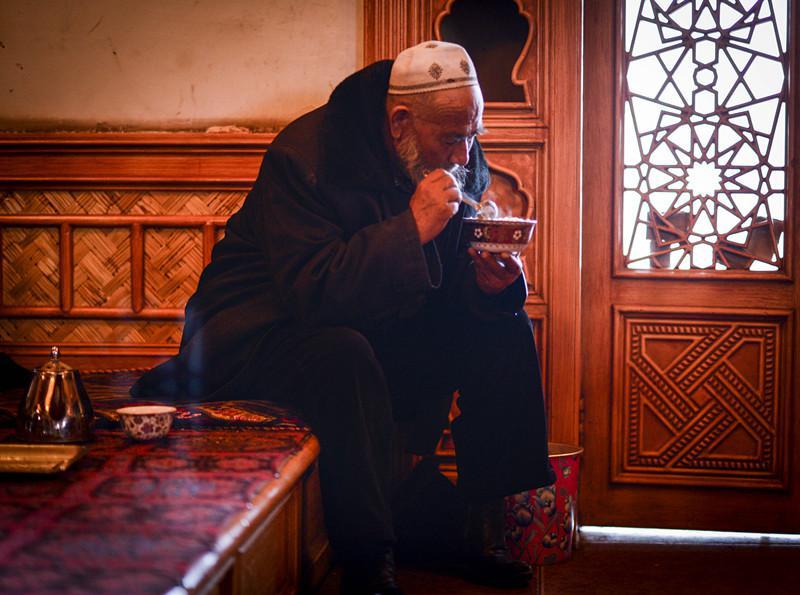

However, the century-old teahouse is not so appealing to young people who prefer modern teahouses with WiFi.
Many locals worry old teahouses like Ostang Boi would one day disappear in the rapidly developing city.
But not all people think so. "The tradition would never change. It's like if you change your clothes, you still have your hat on," says a customer.
(Xinhua photos by Zhao Ge)

